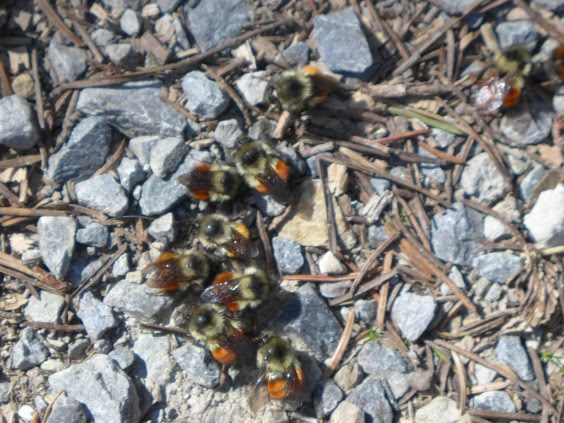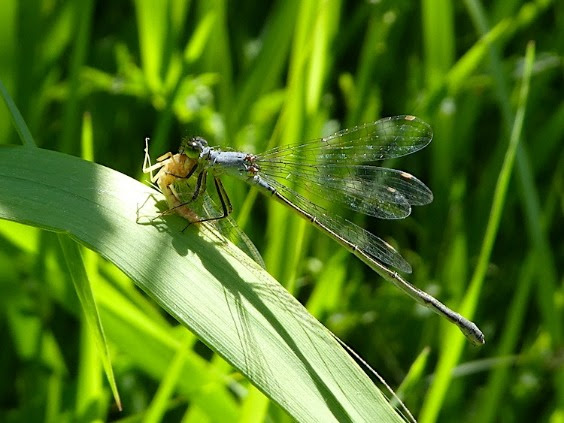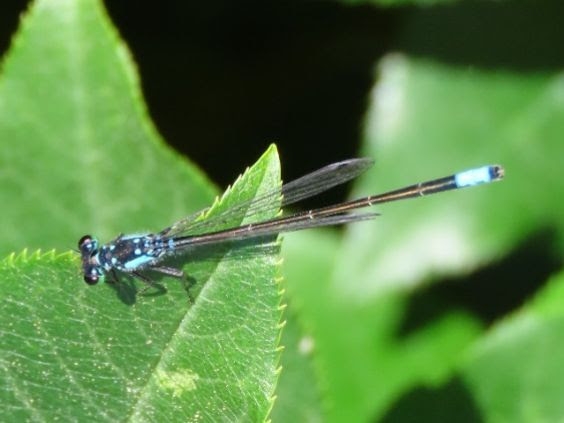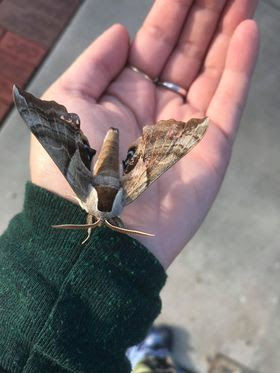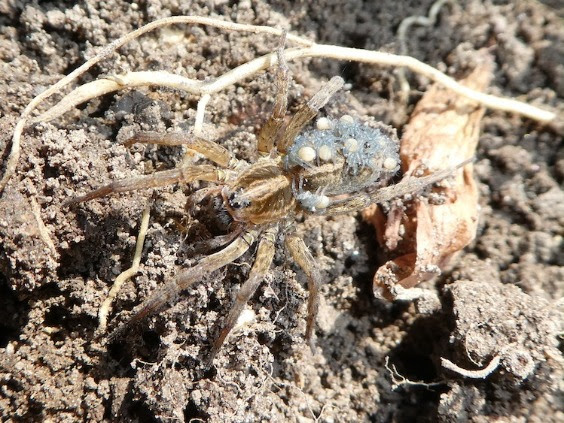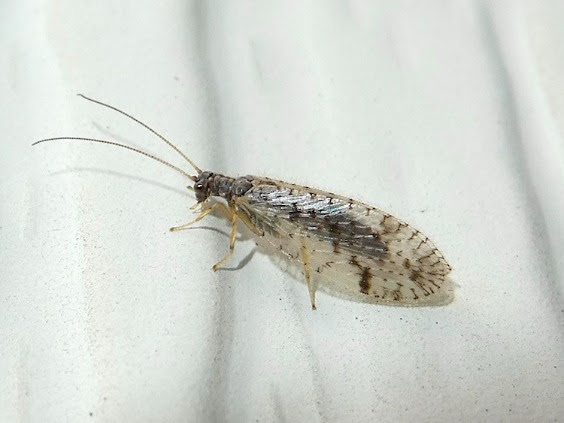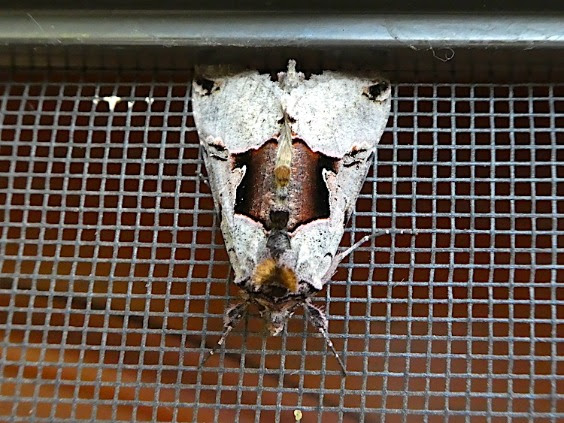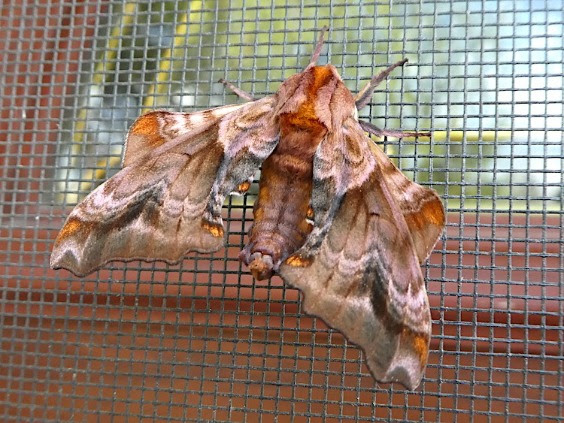Peter found these bumbleebees grouped up at the trailhead. He noted that the ground was perfectly dry, but wondered if someone peed there several days before. We don’t usually see bumbleebees […]
Read MoreWhat’s Buzzin’
What can you see around Western Montana right now?
Pacific Forktail (Ischnura cervula), Female
Damselflies may be smaller, thinner, and weaker fliers than dragonflies, but they have no problem catching lunch — in this case a sizable mayfly. We had difficulty identifying this individual and reached out […]
Read MorePacific Forktail (Ischnura cervula), Male
This Pacific Forktail was more straightforward to identify compared to the previous one. Forktails (genus Iscnura) are so-called for a a small structure at the tip of the abdomen in males […]
Read MoreRiver Jewelwing (Calopteryx aequabilis), Female (top) Male (bottom)
With their metallic bodies and often dark marking on the wings, Jewelwings (genus Calopteryx) are show-stopping stunners. River Jewelwings of either sex can’t be mistaken for any other Rocky Mountain damselfly. Adults […]
Read MoreA Sphinx Moth (Smerinthus ophthalmica)
Photos by: Nicki Boje on 7/4/21 in Missoula, MT
Read MoreWolf Spider (Schizocosa sp.)
Aptly named, wolf spiders are fast, ground-dwelling hunters. Many species live in burrows. You may often see a female carrying her cream-colored egg sack from the end of her abdomen. And, as seen […]
Read MoreA Brown Lacewing (Micromus variegatus)
There are 60 species of brown lacewings in North America. They range in size from about .25 to .5 inches in length. They are similar to the more familiar Green Lacewing, but are typically brown in […]
Read MoreLarge Looper Moth (Autographa ampla)
The Large Looper Moth, also called the Brown-patched Looper Moth and Broken-banded Y, flies most commonly in June and July in our area. Part of the Looper subfamily (Plusiinae), the […]
Read MoreSmall-eyed Sphinx (Paonias myops)
The name of this sphinx moth is a bit misleading. The moth has normal eyes, not small at all, but the eyelike spots on the hindwings could be considered small. These handsome […]
Read MoreIsabelline Mound Ant (Formica ravida)
A banana for scale isn’t going to cut it for this large, mounded, thatch nest …luckily there is a person. Without seeing the ants in more detail, our best guess […]
Read More